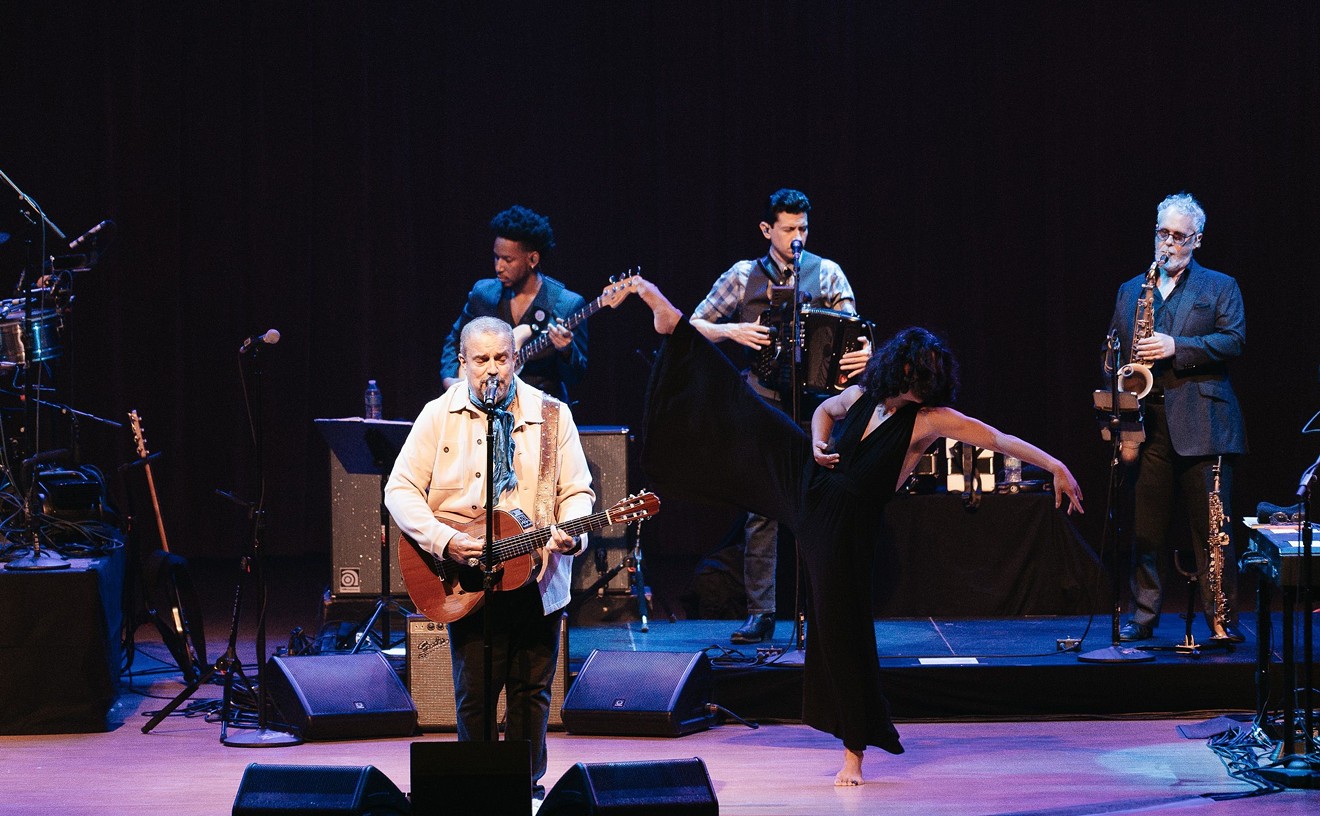At times, the oeuvre of Coheed and Cambria can make classic-rock works like The Wall or Tommy seem as though they were based on the flimsiest of gimmicky ideas. Really. The expansive rock quartet from upstate New York has, over the course of about a decade, created a fictional world with mythology unfolding over a series of albums and media.
Sure, that sounds rather... 1970s. But just check the contentiously labeled "post-hardcore" world, a part of which Coheed and Cambria are often — also contentiously — considered. This past spring saw the release of My Chemical Romance's The Black Parade, a dark look into the regrets of a dying cancer patient, recounted with glam-rock bombast. And October saw Thrice, another band of equal stature, release the first volume of The Alchemy Index, a four-disc opus based on the four elements. The pendulum of rock cool, it seems, has swung again: Concept albums, along with their attendant creepy cover art and lyrical motifs, are back.
But Coheed and Cambria are hardly newcomers to the game. In fact, they're its hands-down winners. Forget concept albums — they're a concept band, and they've been at it in their current incarnation since 2001. Their latest opus, No World for Tomorrow, released last month, adds another 13 tracks to its haunting, epic musical lore.
For the uninitiated: While the majority of the band's current lineup began playing together in 1995 under the name Shabutie, six years later came a dramatic shift, at the behest of frontman Claudio Sanchez. As a hobby, he wrote baroque science fiction tales, and he began using them as songwriting fodder. These early vignettes formed part of a larger saga now known as The Amory Wars, and the band was renamed after its two protagonists. Their story has continued since Coheed and Cambria's first album, The Second Stage Turbine Blade, released in 2002.
In a nutshell, Coheed Kilgannon, also sometimes referred to as "The Beast," harbors a virus that could somehow trigger the destruction of the universe. Through his wife, Cambria, he may have passed this on to his children. It gets way, way more complicated than that, involving theoretical constructs of good and evil with names like "the Keywork" and "Heaven's Fence." It's heady, essentially geeky stuff; Sanchez released a series of graphic novels (also under the rubric The Amory Wars) to further explain his cosmology.
It's a little surprising, then, to discover that not all of the band was made up of sci-fi fanatics at its inception. "I mean, I liked it to a certain extent, as much as any boy does — Star Wars, Dune," bassist Michael Todd says. "None of us really grew up playing Dungeons and Dragons or anything."
In fact, much of the band's early germination is unexpected. Coheed and Cambria first truly broke out on a national level after a stint on the 2002 Warped Tour, and their debut album featured an appearance by Dr. Know of '80s punk legends the Bad Brains. But Todd contends that punk and hardcore were just minor influences on the bandmates who grew up near Woodstock, New York. There, he says, the scene was dominated by adults who valued musicianship and true chops above all else.
"There were kids' bands, but they were all kids of musicians," Todd recalls. "It was adults playing for adults, not kids playing for kids, and the kids would come and try to hang with the adults. So we've always been known as a band for musicians, because there's always been a lot more expected of us because of where we grew up. I wasn't trying to impress the girls at school; I was trying to hang with the big dogs."
As such, Todd remembers listening to jazz, blues, the Police, even Ani Difranco. And, of course, Led Zeppelin — there's a definite influence of Zep's mysticism and pure riff power in Coheed and Cambria's sound. And the band's logo, comprised of a triangle and variously sized circles known as "the Keywork," owes more than a little to Led Zep's curlicuing Zoso symbols.
But also growing in popularity around the time of the band's first album were the groups who would take charging, emo rock closer to the mainstream. Indeed, some of Coheed's earliest high-profile touring mates included the likes of the Used, Thursday, Thrice, and AFI. With these acts, they share bruising, twisted minor chords, soaring melodies, and a distinct aura of fatalism.
But Coheed still defies easy categorization — there are their excursions into live improvisation and their prizing of flawless technical execution. Then there is Sanchez's singing voice, an eerily powerful falsetto that requires instant suspension of disbelief to recognize its terrifying range and expressive power. Add to this a musical climate in nearby New York City that, at the time, favored nouveau garage and dance rock and it's little wonder that the band was often flying solo.
"We didn't really get fans until we got in the van and hit the road," Todd says. "The New York fan base grew exponentially when we started selling records, and then New York was happy to claim us." These idiosyncrasies and a dogged attention to their craft have left Todd comfortable about the fact that the band's original narrative arc is drawing to a close. No World for Tomorrow introduces a new villain but also the draining of a beam of light that supplies the planets' energy. And the band has announced that its fifth album, forthcoming next year, will finally wrap up the Kilgannon family saga.
But it won't signal the end of Coheed and Cambria, the band, who plan to continue playing under the name. "We haven't really discussed whether we're going to run with another concept. We might run with another story that parallels Coheed and Cambria," Todd says. "We might just write new organic songs that don't have to do with anything. But we'll cross that bridge when we come to it."










